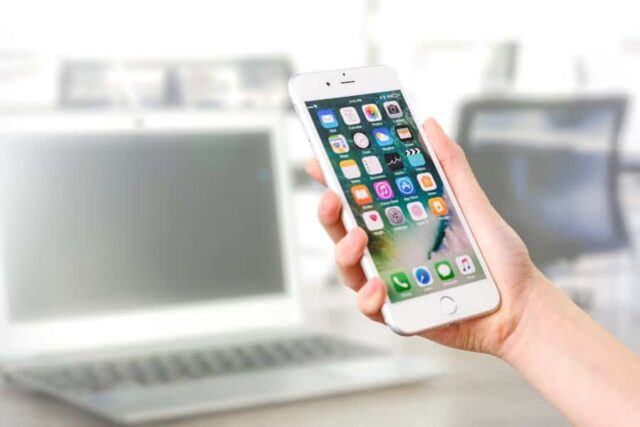In the vast landscape of research methodologies, one approach stands out for its ability to dive deep into the lives of individuals, observing their behaviors, habits, and routines in their natural environments. This approach is known as ethnography, and with the advent of mobile technology, it has evolved into a powerful tool known as mobile ethnography. In this article, we delve into what mobile ethnography is, how it works, and the myriad benefits it offers in understanding human behavior in today’s digital age.
Understanding Mobile Ethnography
Ethnography, in its traditional sense, has long been recognized as a powerful research methodology for gaining deep insights into human behavior and social dynamics. Rooted in anthropology, ethnographic studies involve researchers immersing themselves within the communities they wish to study, allowing them to observe and understand social phenomena firsthand. This approach has found applications in various disciplines, including sociology, psychology, marketing, and user experience research, due to its ability to provide rich, contextually-grounded insights.
Mobile ethnography builds upon this foundation by harnessing the widespread availability and functionality of smartphones and other mobile devices. In doing so, it extends the reach and scope of traditional ethnography, enabling researchers to accompany participants virtually through their daily lives, professionals from Strylite explain. By leveraging the portability and connectivity of mobile technology, researchers can capture real-time insights and experiences, gaining access to moments and contexts that may be inaccessible through traditional methods alone.
One of the key distinctions of mobile ethnography is its departure from reliance solely on interviews or surveys. While these methods are valuable in their own right, they often rely on participants’ recall and interpretation of past experiences, which can be subject to biases and inaccuracies. In contrast, mobile ethnography provides a dynamic and unfiltered glimpse into people’s lives as they unfold naturally, offering a more authentic and holistic understanding of behavior and context.
By empowering participants to document their experiences using their smartphones, mobile ethnography opens up a window into the minutiae of daily life – from mundane routines to significant events. This approach allows researchers to capture a wealth of data in various formats, including photos, videos, audio recordings, and written reflections, providing a multi-dimensional view of participants’ lived experiences. As such, mobile ethnography holds immense potential for shedding light on complex phenomena and uncovering insights that may otherwise remain hidden.
How Mobile Ethnography Works
The process of conducting mobile ethnography typically involves several key steps:
Recruitment: Researchers recruit participants who are willing to share their experiences and behaviors. This could involve screening potential candidates based on specific criteria relevant to the research objectives.
Onboarding: Participants are guided through the onboarding process, which may include installing a dedicated mobile app designed for data collection. Researchers provide instructions and guidelines to ensure participants understand how to use the app effectively.
Data Collection: Once onboarded, participants use their smartphones to document various aspects of their lives, such as daily activities, interactions, environments, and emotions. They may be prompted to capture photos, videos, audio recordings, or written reflections at specified times or in response to specific prompts.
Analysis: Researchers analyze the collected data, looking for patterns, themes, and insights that shed light on the research questions. This analysis may involve qualitative techniques such as thematic coding, as well as quantitative methods for measuring trends and frequencies.
Insights Generation: The findings from the analysis are synthesized into actionable insights that inform decision-making, whether it be designing products, refining marketing strategies, or understanding societal trends.
Benefits of Mobile Ethnography
The adoption of mobile ethnography offers several compelling benefits over traditional ethnographic methods:
Authentic Insights in Real Time:
Mobile ethnography enables researchers to capture real-time data in participants’ natural environments, providing authentic insights that may be missed in more controlled settings. By observing behaviors as they occur, researchers gain a deeper understanding of context and situational influences.
Enhanced Participant Engagement:
The use of mobile devices makes participation more convenient and accessible for individuals, leading to higher levels of engagement. Participants can contribute to the study on their schedules, reducing the burden of traditional ethnographic methods that require in-person interactions or diary keeping.
Rich Multimedia Data:
With smartphones capable of capturing photos, videos, and audio recordings, mobile ethnography allows for the collection of rich multimedia data. This multimedia approach adds depth and richness to participants’ narratives, enabling researchers to explore nuances and subtleties that may not be conveyed through text alone.
Longitudinal Insights:
Mobile ethnography facilitates longitudinal studies by allowing researchers to track participants’ behaviors and experiences over time. This longitudinal perspective unveils patterns, trends, and changes that unfold gradually, offering valuable insights into evolving habits and attitudes.
Cost and Time Efficiency:
Compared to traditional ethnographic methods that require extensive fieldwork and logistics, mobile ethnography offers cost and time efficiencies. The virtual nature of data collection reduces travel expenses, logistical challenges, and the need for extensive fieldwork, making it a more scalable and economical option.
Global Reach:
With the widespread adoption of smartphones across the globe, mobile ethnography has the potential to reach participants in diverse geographic locations and cultural contexts. This global reach expands the scope of research and allows for cross-cultural comparisons, enriching the depth and breadth of insights.
Real-World Applications
Product Design and Development:
A consumer electronics company uses mobile ethnography to understand how customers interact with their products in real-world settings. By observing usage patterns and pain points, they identify opportunities for product improvements and innovation.
Healthcare Research:
A medical research team conducts a mobile ethnography study to explore patient experiences with chronic illness management. By tracking daily routines and treatment adherence, they uncover barriers to self-care and develop personalized interventions to improve patient outcomes.
Cultural Studies:
An anthropologist uses mobile ethnography to study the impact of digital technology on indigenous communities. By engaging community members in documenting their daily lives through smartphones, they examine changing cultural practices and modes of communication in the digital age.
Mobile ethnography represents a powerful evolution of traditional ethnographic methods, leveraging mobile technology to gain deep insights into human behavior in real-world contexts. From its ability to capture authentic experiences to its cost efficiencies and global reach, mobile ethnography offers a wealth of benefits for researchers across diverse domains. As technology continues to advance, the potential for mobile ethnography to uncover new insights into human behavior in the digital age remains boundless. Whether it’s informing product design, enhancing healthcare interventions, or exploring cultural dynamics, mobile ethnography stands as a versatile and invaluable tool for understanding the complexities of human life in today’s interconnected world.














